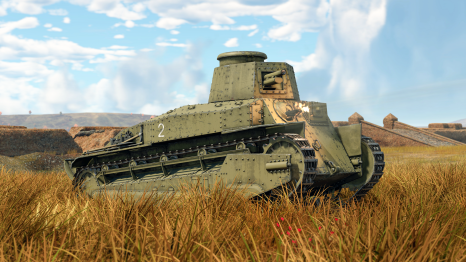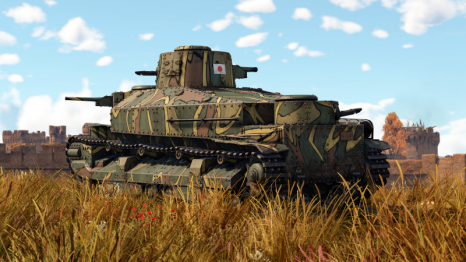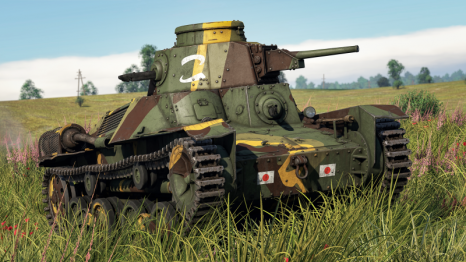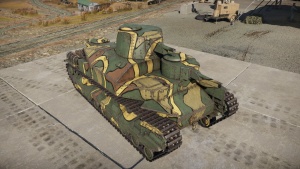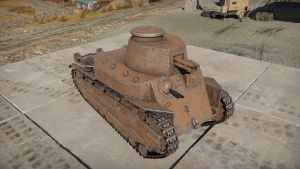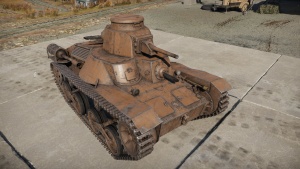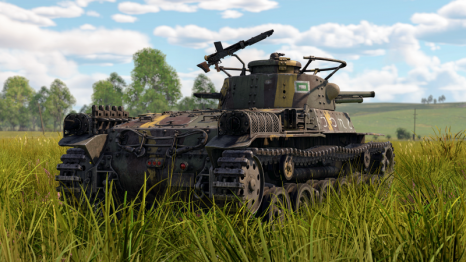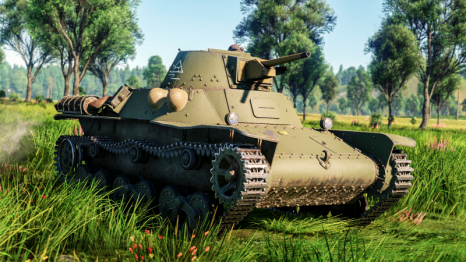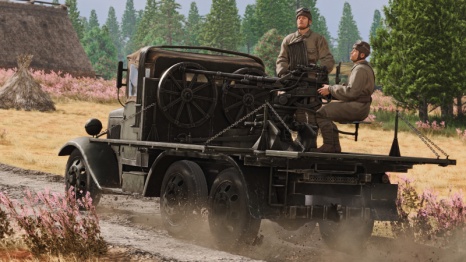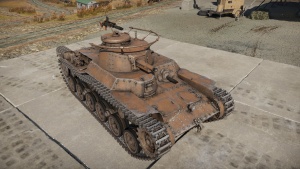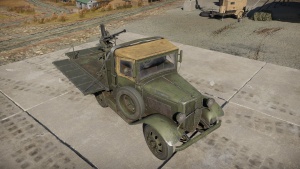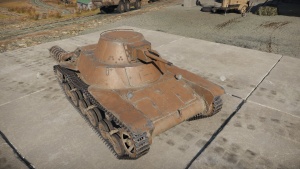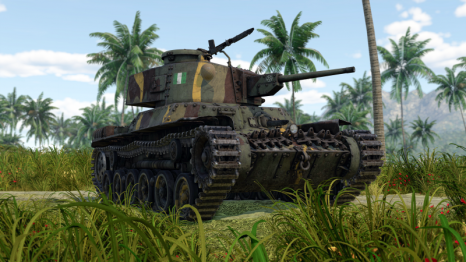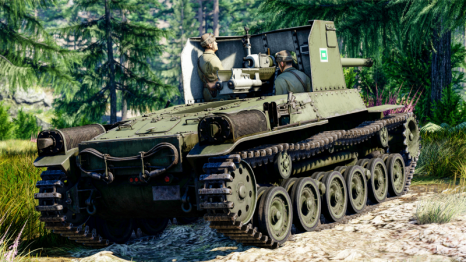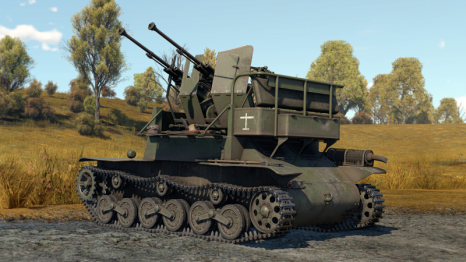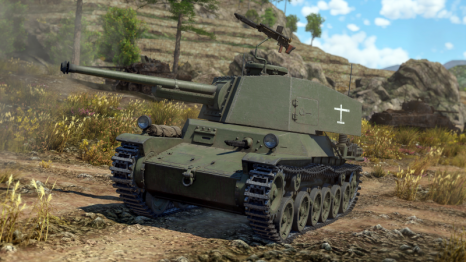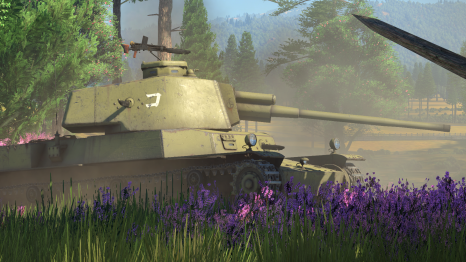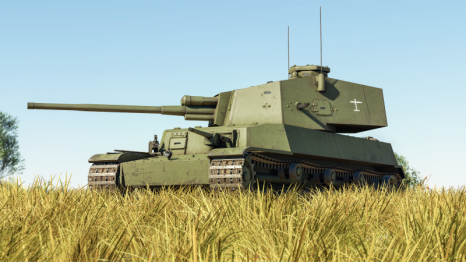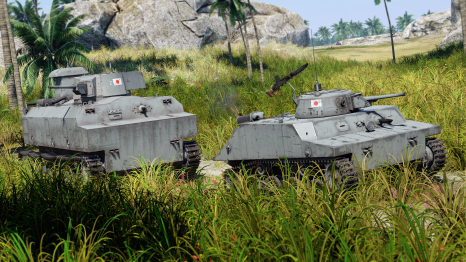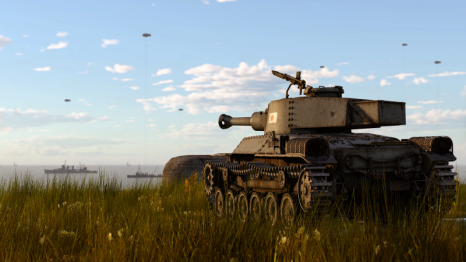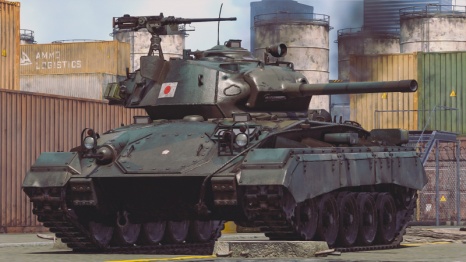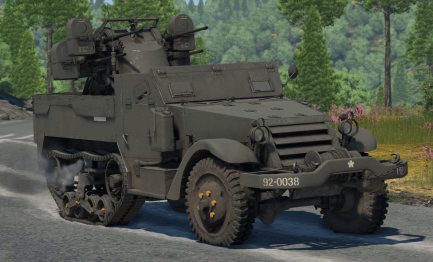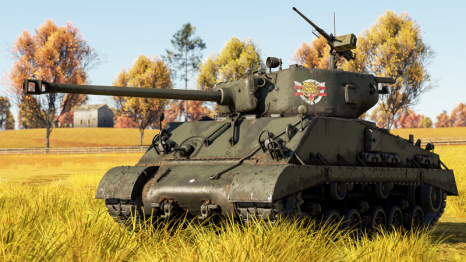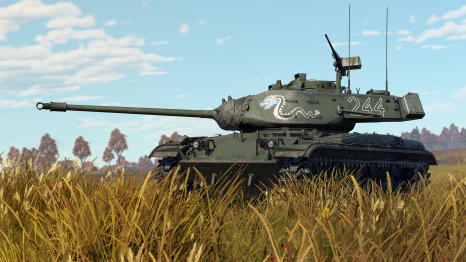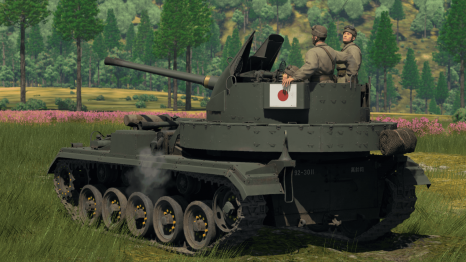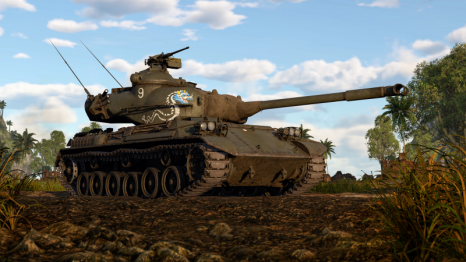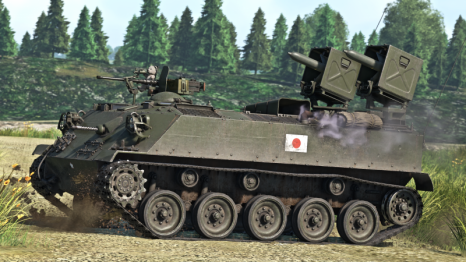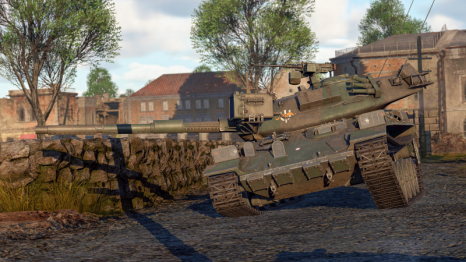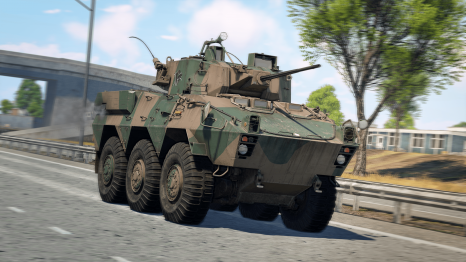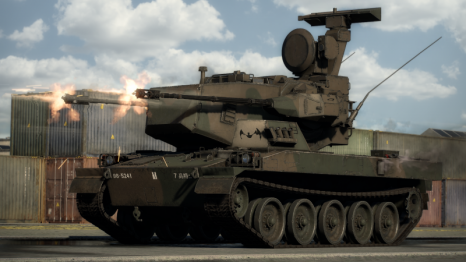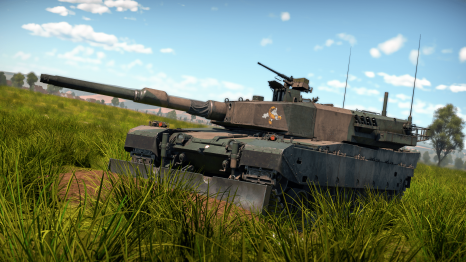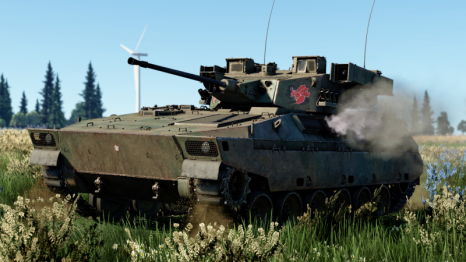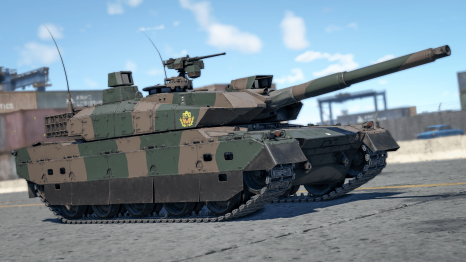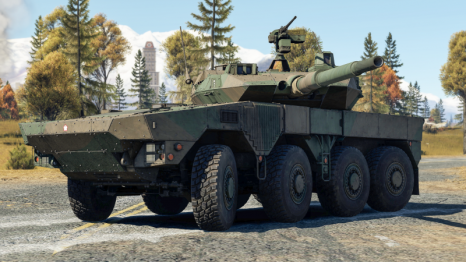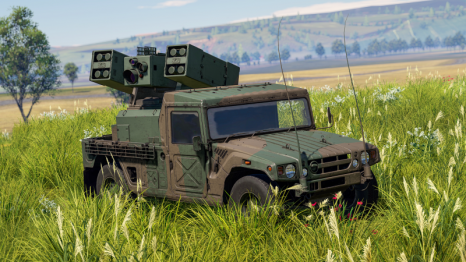Difference between revisions of "Japanese Ground Vehicle History"
m (→Japanese (Ground) Self-Defense Force: Not So Sure How To Structure Cold War - Modern Development Of Tanks. I'll Fill This In Later After Completing WWII) |
|||
| (7 intermediate revisions by the same user not shown) | |||
| Line 2: | Line 2: | ||
:General proofreading, editing and information '''additions''' are fine by me, removal is discouraged. --[[User:U17577377|Shimakaze]] ([[User talk:U17577377|talk]]) | :General proofreading, editing and information '''additions''' are fine by me, removal is discouraged. --[[User:U17577377|Shimakaze]] ([[User talk:U17577377|talk]]) | ||
| − | + | = Historic Overview = | |
{{Main|Abbreviations#.28JP.29_Ground|l1=Japanese tank naming}} | {{Main|Abbreviations#.28JP.29_Ground|l1=Japanese tank naming}} | ||
| − | + | == Interwar == | |
<gallery mode="packed" heights="175px"> | <gallery mode="packed" heights="175px"> | ||
ArtImage_I-Go_Ko.png|[[I-Go Ko|Type 89 I-Go (Late)]], 1929 | ArtImage_I-Go_Ko.png|[[I-Go Ko|Type 89 I-Go (Late)]], 1929 | ||
| Line 11: | Line 11: | ||
</gallery> | </gallery> | ||
| − | After World War | + | After World War I ended, Japan, following the new trend of tank development,, sought to mechanize their cavalry after unsuccessful armored car experiments, which were unsuitable for the poor roads and extreme winter conditions in Manchuria. Consequently, the Japanese Army purchased the following vehicles from their then Allied nations to kickstart Japanese tank development: one British Heavy Mk. IV {{Annotation|(Female)|Armed only with machine guns, as opposed to the Male variant with cannons}}, several Medium Mk. A "Whippet," and a dozen French Renault "FT" tanks. |
| + | |||
| + | With their new tanks fully acquired by 1919, tank studies and research could commence in 1920, with Army command undergoing discussions on how tank usage, doctrine, and organization should be handled. By 1925, the first Japanese tank battalion (later upgraded to the 1st Tank Regiment) was established, along with a new tank school. The structuring of the Japanese tank force primarily relied on a main force of light tanks (<10t), supported by "Heavy" tanks (<20t), with a goal of forming 3 light tank battalions (190 vehicles) and 1 heavy tank battalion (30 vehicles). However, the limited number of imported tanks posed a challenge for ambitious plans to establish a completely new armored tank force. Initially, negotiations were considered for outsourced tanks to save on the costs of designing and producing domestic tanks. The first idea involved approaching the British, but they prioritized upgrading their own army and couldn't afford additional production. The Japanese also dismissed tank designs by the American John W. Christie due to concerns about suspension and track reliability. This led them to consider purchasing more Renault FTs from the French, who were preoccupied with developing their latest tank. This marked the beginning of favoring Japanese domestic tanks over buying technologically obsolete tanks simply to fill ranks. Meanwhile, behind-the-scenes tracked vehicle development was already proving worthwhile. | ||
{| class="wikitable mw-collapsible" style="width: 100%; | {| class="wikitable mw-collapsible" style="width: 100%; | ||
| Line 37: | Line 39: | ||
|-|} | |-|} | ||
| − | + | {{Notice | |
| − | + | |Editorial Note About "Chi-I" (Prototype No.1) and "Chi-Ro" (I-Go): | |
| − | + | While internally these vehicles were retroactively counted into the Japanese IRoHa tank naming (chi-I, chi-RO, chi-HA, ...) these never were actually referred to as Chi-I and Chi-Ro. | |
| − | {{Notice|Note About "Chi-I" (Prototype No.1) and "Chi-Ro" (I-Go): | ||
| − | While internally these vehicles were retroactively counted into the Japanese IRoHa tank naming | ||
Prototype No.1 & No.2 (Type 91 Heavy) were never adopted for service, and never got a "proper name / designation", the I-Go was the first adopted tank and was named under the short lived "X-Go" naming, also going of the IRoHa, with the scheme simply translating to "Xth - Tank": | Prototype No.1 & No.2 (Type 91 Heavy) were never adopted for service, and never got a "proper name / designation", the I-Go was the first adopted tank and was named under the short lived "X-Go" naming, also going of the IRoHa, with the scheme simply translating to "Xth - Tank": | ||
| Line 47: | Line 47: | ||
<nowiki>I-go = 1st Tank, RO-go = 2nd Tank, HA-go = 3rd Tank</nowiki> | <nowiki>I-go = 1st Tank, RO-go = 2nd Tank, HA-go = 3rd Tank</nowiki> | ||
| + | Some sources even suggest that the "I-Go Ko" & "I-Go Otsu" were internalized as "Chi-I" and "Chi-Ro" respectively, others mention I-Go and Ro-Go as "Chi-I" and "Chi-Ro" as these were the first 2 adopted tanks of the heavy/medium category. | ||
| + | |!}} | ||
| + | [[File:GarageImage_Ro-Go.jpg|right|thumb|Type 95 Ro-Go, a later iteration on the fundamental first Japanese design]] | ||
| + | The Army Technology Headquarters approved the development of a domestic tank, spearheaded by Tomio Hara, a young Japanese officer who, after extensive tank studies and advocacy for Japanese tank development, would become the father of many Japanese tank designs and principles. His first domestically produced Japanese tank eventually resulted in what was simply known as the ''{{Annotation|試製一号戦車|Shisei Ichi Gō-Sensha}} (Prototype Tank No.1),'' which was developed under tight deadlines. Most of the challenges did not stem from designing the tank itself; rather, the Japanese industry lacked the necessary tools and manufacturing setup for tank development. The Army opted to utilize the [[:Template:TankManufacturer Osaka Arsenal|Osaka Arsenal (State Weapons Factory)]] instead of the then-new and fragile automotive industry. This meant that all parts had to be precisely crafted, requiring tens of thousands of blueprints for everything. The prototype was completed by February 1927, just a month short of its 22-month deadline to March, and was tested at the famous Fuji training range by June 21. After civilians and military personnel alike witnessed the first Japanese tank in motion, tests concluded that it was far superior to its Western imports in handling, firepower, and ease of operation, but its overall weight and production cost dismissed it from service. This success established confidence in domestic tank design. | ||
| − | + | [[File:GarageImage_I-Go_Ko.jpg|left|thumb|Type 89 I-Go, First mass produced Japanese and {{Annotation|diesel powered*|Otsu variant}} tank]] | |
| − | [[File: | + | While the first Japanese tank reinforced the development and research into domestic tanks, the prototype was far too heavy at 18 tonnes, exceeding the requested weight of 12 tonnes. This prompted Tomio to return to the drawing board for a lighter main tank, aiming for around 10 tonnes. Development was inspired by the 1927 British-imported Vickers Medium Mk.C <small>(Export Vicker Medium Mk.III, not to be confused with the Medium Mk.C "Hornet")</small>. By 1929, the new I-Go was ready, and its first prototype rolled out of Osaka Arsenal. Further mass production was assigned to [[:Template:TankManufacturer_Mitsubishi|Mitsubishi]] [[:Template:AirManufacturer_Mitsubishi|Aircraft]], which would continue to mass-produce most of the Japanese tanks thereafter. By the time of adoption, it would be known as the Type 89 "I-Go" Light Tank. Its prototype weighed only around 9 tons, while production models weighed in at 11.8 tons. This designation later changed to become the Type 89 "I-Go" Medium Tank after Headquarters reviewed its tank doctrine, adding the new role of medium tank instead of just light and heavy. The light tank role was then replaced by the Type 95 "Ha-Go" Light Tank. |
| − | |||
| − | + | While production of Japan's new main-line tank had just begun, the Army decided to acquire more Western tanks to bolster and replace older models, as well as to learn from the latest advances made by their Western counterparts in 1930. They purchased multiple Renault "NC" tanks from France, along with several British Carden Loyd tankettes and Vickers 6-Ton tanks. The tankette, much like multi-turreted designs, was considered by the Japanese as a necessary branch of tank that required development and research. There were multiple attempts at building tankettes, ranging from the earliest Type 92 cavalry tank (and its amphibious prototypes) to the Type 94 tankette. While mobility was appreciated for combat and scouting purposes, tankettes were deemed lacking in serious firepower and upgrade potential, being armed only with machine guns. The latter Type 94 tankette also introduced Tomio Hara's bell crank scissors suspension, which became the standard suspension system for all subsequent Japanese tanks. It proved highly successful for off-road operations and helped reduce overall maintenance costs. | |
| − | |||
[[File:GarageImage_Ha-Go.jpg|right|thumb|Type 95 Ha-Go, Japan's most numerous produced tank]] | [[File:GarageImage_Ha-Go.jpg|right|thumb|Type 95 Ha-Go, Japan's most numerous produced tank]] | ||
| − | + | As the early-mid 1930s rolled by, Japan employed its newly established tank forces in Manchuria and skirmishes along the Chinese border, showcasing the value of Japanese tanks. However, despite advancements in the automotive industry that increased the mobility of mechanized infantry units, with an average divisional speed of 40 km/h, the heavier and slower I-Go lagged behind, reaching a maximum speed of only 25 km/h, which further decreased to 12-8 km/h off-road. Although, for frontline movement under infantry marches, this speed was deemed sufficient. With Japan's emphasis on light tanks as the main force and a growing need for higher mobility, the design of the 1928 I-Go began to fall short by the mid-1930s, necessitating a replacement. | |
| + | |||
| + | Previous imports of British tanks and tankettes, along with Japanese attempts to produce tankettes, culminated in the development of the new main tank for the Japanese Army: the Type 95 "Ha-Go" Light Tank. Development of the Ha-Go began even before the need for the I-Go's replacement was acknowledged. The original request for its development came from the Kwantung Army, aiming to devise an experimental mechanized unit (which would become the "1st Mixed Brigade") to Mitsubishi Aircraft. This marked the first instance of a tank being based on a prototype from a private company. | ||
{{Break}} | {{Break}} | ||
| − | + | ||
| + | {{Notice|Japanese Machine Gun Doctrine: | ||
| + | While it may seem odd why Japanese tank machine guns are standard infantry magazine fed, this was a deliberate choice taking into account the Japanese doctrine around automatic machine guns, preferring a more accurate and long range engagement on the machine gun, it was heavily implied that every shot counted and that it wasn't simply for suppressing enemy targets as every bullet was meant to hit. This would in theory save cost and bullets, and the additional benefit of reducing logistical strains by taking standard infantry ready munitions.}} | ||
| + | == Second Sino-Japanese War == | ||
<gallery mode="packed" heights="175px"> | <gallery mode="packed" heights="175px"> | ||
ArtImage_Chi-Ha.png|[[Chi-Ha|Type 97 Chi-Ha]], 1937 | ArtImage_Chi-Ha.png|[[Chi-Ha|Type 97 Chi-Ha]], 1937 | ||
| Line 64: | Line 71: | ||
ArtImage_Type_94.jpg|[[Type 94|Type 94 (20 mm Type 98)]], 1938 | ArtImage_Type_94.jpg|[[Type 94|Type 94 (20 mm Type 98)]], 1938 | ||
</gallery> | </gallery> | ||
| + | With Japanese tank development ongoing and reports returning from frontline border skirmishes, by 1936, a new infantry support tank was requested. While the I-Go, though modestly successful at the front, was deemed too slow for Japanese preferences. The new tank program aimed to fulfill the role of a medium tank, supporting infantry alongside the main force of Ha-Gos. Improvements were sought in armor, considering body construction and penetration defense (such as angled armor), and primarily focusing on increasing speed to ensure it could keep pace with both motorized infantry and light tanks. | ||
| + | |||
| + | The decision to use diesel engines in previous tanks, starting with the I-Go Otsu model, had proven necessary due to the ease of obtaining diesel fuel compared to gasoline. Diesel was less volatile and flammable, and alternative methods of procuring diesel from oil shale and even soybeans were considered. Additionally, the extreme cold conditions of the Manchurian battlefield favored air-cooled diesel engines to prevent the need for restocking or freezing coolant. However, this required larger air-cooled diesel engines to achieve the same output as gasoline engines, raising concerns about increased weight and material costs. | ||
| + | |||
| + | Mixed opinions emerged regarding whether to invest more in cost for better performance or to prioritize saving weight and cost, even if it compromised survivability and speed. This dilemma led to the development of two branching prototypes based on both concepts. The Army Technical Headquarters devised both concepts under Plan A (甲 , Kō) and Plan B (乙 , Otsu), resulting in: | ||
| + | |||
| + | Plan A - More Expensive: | ||
| + | 13.5 tons | ||
| + | 2 manned turret | ||
| + | 2 machine guns (1 hull, 1 rear-side turret) | ||
| + | Roughly same crew compartment size as the I-Go | ||
| + | Plan B - Cheap Alternative: | ||
| + | 10 tons | ||
| + | 1 manned turret | ||
| + | 1 machine gun (1 hull, removed out of the turret) | ||
| + | |||
| + | The Imperial Japanese Army General Staff Office requested that Plan A be reduced to 12 tons, but the Technical Headquarters couldn't comply as the prototype reached 15 tons. This led to the idea of mass deploying Plan B to compensate for the performance difference using the "saved" cost. Despite the Tank School's opinion that the two-man turret provided an absolute and essential advantage over a one-man turret, even if the alternative vehicle had acceptable speed and armor, neither concept could find a compromise. This possibly resulted in the development of a third prototype (unrelated to the initial order), later known as the "Type 98 Chi-Ho medium tank." | ||
| + | |||
| + | {{Notice|Japanese Tank Doctrine into the 30s: | ||
| + | During this period, there was a debate among nations about whether to prioritize infantry-based tank forces or independent tank units for combined arms strategies. In 1933, Japan demonstrated effective combined arms tactics during the Battle of Rehe, utilizing mechanized infantry alongside I-Go tanks which swiftly overtook retreating Chinese troops and reached the capital of Rehe, Chengde. Even with other successful examples, Minister of War Hideki Tojo favored an infantry-centered approach with dispersed armor support, which proved ineffective against both Chinese anti-tank defenses and Soviet tanks during the Khalkhin Gol battles. This shift in tactics diminished the importance of Japanese tank funding.}} | ||
| + | |||
| + | [[File:GarageImage_Chi-Ha.jpg|left|thumb|Type 97 Chi-Ha, Japan's main medium tank]] | ||
| + | With the Second Sino-Japanese War escalating into a full-blown conflict, military funding increased drastically, tipping the balance in favor of Plan A. This led to Plan A being put into service as the Type 97 "Chi-Ha" Medium Tank, while the Plan B "Chi-Ni" was left behind with only a singular prototype built. The Chi-Ha was also notable as the first Japanese tank to be equipped with radio equipment by default. Previous models like the I-Go and Ha-Go had only begun experimenting with radio equipment around 1937 as technology advanced and equipment became smaller. Before this, tanks relied on signal flags, with specialized command variants being the only vehicles equipped with radios. | ||
| + | {{Break}} | ||
| + | |||
| + | [[File:GarageImage_Type_94.jpg|right|thumb|Type 94 Truck, Equipped with a 20 mm Type 98 Anti-Air Gun]] | ||
| + | The onset of the war also highlighted the need for advancements in ground-to-air combat. Machine guns were deemed insufficient as anti-air defense due to the increasing speed and capabilities of aircraft. Towed anti-aircraft defenses in convoys also suffered from slow response times. As a result, the quickest solution for defending moving units was to equip standard Japanese trucks with the guns they were towing, leading to the standardization of Japanese self-propelled anti-aircraft vehicles for the remainder of the war. However, development of self-propelled anti-aircraft vehicles didn't end there. It initially progressed to half-tracks before advancing to full-tracked tanks. Initial prototypes were based on the Type 97 Te-Ke light tank and evolved into the experimental Ki-To self-propelled anti-aircraft vehicle. Further development occurred with the following Type 98 Ke-Ni light tank, leading to experimental vehicles such as the [[Ta-Se]] and [[So-Ki]]. | ||
| + | {{Break}} | ||
| + | |||
| + | [[File:GarageImage_Ke-Ni.jpg|left|thumb|Type 98 Ke-Ni, The planned replacement of the Ha-Go]] | ||
| + | The increased wartime budget opened up possibilities for upgrading the mainstay of the Japanese tank army. Numerous upgrades were developed, including welding the armor instead of using rivets, increasing its thickness, and adopting a more rounded shape to enhance shell deflection. This streamlined profile also saved weight while boosting speed. Additionally, the main turret, also rounded, transitioned to a two-man crew configuration after removing the hull-mounted machine gun and mounting it beside the main gun. Despite the Ke-Ni's superiority over the Ha-Go in various aspects, the Japanese Army continued to prioritize the production of the Ha-Go due to its battlefield effectiveness, reliability, and the performance differences not being decisive enough. | ||
| + | {{Break}} | ||
| + | |||
| + | ===Battles of Khalkhin Gol=== | ||
| + | {{Notice|Japanese Political War Doctrines: | ||
| + | Japan's path to war was marked by intense interservice rivalry and doctrinal clashes. The main doctrines, Northern and Southern Expansion, respectively focused on expanding into Northern Asia against Russia/USSR (Army-supported) and into Southeast Asia and the Pacific (Navy-supported). For the Southern expansion, Army factions favored counterclockwise expansion (Island hopping), while Navy factions supported clockwise expansion (Claiming naval dominance).}} | ||
| − | + | The last pivotal point in Japanese war policy occurred after the battles of Khalkhin Gol, stemming from border disputes with Soviet-Mongolia. These skirmishes escalated into a larger conflict, pitting Japanese units against Soviet troops. The Soviet Union's effective use of tanks, notably the BT series, underscored the significance of armored warfare. Meanwhile, Japan, relying on infantry support tanks like the Ha-Go and Chi-Ha, lacked adequate anti-tank capabilities, proving detrimental in countering Soviet armored assaults. These battles resulted in a significant defeat for Japan and a victory for the Soviet Union, leading to the signing of a ceasefire agreement and solidifying Soviet influence in the region. This prompted Japan to reevaluate its military standing. | |
| + | |||
| + | The escalation of conflict at Khalkhin Gol occurred primarily due to actions by the Kwantung Army, without governmental authorization. Following the defeat, the signing of the Neutrality Pact, and the replacement and eventual purge of the largest supporters of the doctrine (Kōdōha faction), further attempts at the Northern Expansion Doctrine were disfavored. Priority and funds shifted to the Navy, and reforms within the Japanese army led to an increase in tank production from 500 to 1,200 annually. Additionally, a mechanized headquarters was established, returning Japanese tanks to a combined arms-focused development. This included the introduction of the [[Type 1 (47 mm)]] tank gun in response to the Soviet [[20-K (45 mm)]]. | ||
| + | |||
| + | == World War II == | ||
;Japanese Offensive | ;Japanese Offensive | ||
<gallery mode="packed" heights="175px"> | <gallery mode="packed" heights="175px"> | ||
| Line 76: | Line 123: | ||
<gallery mode="packed" heights="175px"> | <gallery mode="packed" heights="175px"> | ||
ArtImage_Chi-Nu.png|[[Chi-Nu|Type 3 Chi-Nu]], 1943 | ArtImage_Chi-Nu.png|[[Chi-Nu|Type 3 Chi-Nu]], 1943 | ||
| − | + | Type 4 Chi-To Operation Ketsugо.png|[[Chi-To|Type 4 Chi-To]], 1944 | |
ArtImage_Chi-Ri_II.png|[[Chi-Ri II|Type 5 Chi-Ri]], 1945 | ArtImage_Chi-Ri_II.png|[[Chi-Ri II|Type 5 Chi-Ri]], 1945 | ||
</gallery> | </gallery> | ||
| − | + | === Japanese Navy === | |
<gallery mode="packed" heights="175px"> | <gallery mode="packed" heights="175px"> | ||
| − | Ka-Chi_(1).png|[[Ka-Mi|Type | + | Ka-Chi_(1).png|[[Ka-Mi|Type 2 Ka-Mi]] and [[Ka-Chi|Type 3 Ka-Chi]], 1941 - 1943 |
ArtImage_Chi-Ha_Short_Gun.png|[[Chi-Ha Short Gun]], 1945 | ArtImage_Chi-Ha_Short_Gun.png|[[Chi-Ha Short Gun]], 1945 | ||
| − | ArtImage_Chi-Ha_LG.png|[[Chi-Ha LG]], 1945 | + | ArtImage_Chi-Ha_LG.png|[[Chi-Ha LG|Chi-Ha Long Gun]], 1945 |
</gallery> | </gallery> | ||
| + | Amidst the factionalised and fragmented Japanese military, tank development was not exclusive to the Army. In the early stages of Japanese tank development, the Army explored amphibious tank designs before abandoning the endeavour, which was later revived by the Navy. The Japanese Imperial Navy, which maintained its own land units under the Japanese Naval Landing Forces, including its own tanks, primarily utilized existing tank designs such as the [[I-Go Ko|Type 89 I-Go]], [[Ha-Go|Type 95 Ha-Go]] and [[Chi-Ha (Family)|Type 97 Chi-Ha]]. Additionally, the Navy conducted experiments with tank designs to meet its specific requirements. | ||
| + | |||
| + | [[File:GarageImage_Ka-Mi.jpg|left|thumb|[[Ka-Mi|Type 2 Ka-Mi (w/o Pontoons)]], The Japanese Navy's first own tank]] | ||
| + | [[File:GarageImage_Ka-Chi_Floats.jpg|left|thumb|[[Ka-Chi|Type 3 Ka-Chi (w/ Pontoons)]], Submarine depth certified tank]] | ||
| + | With the vast number of islands scattered across the Pacific, the Japanese Navy needed increased firepower for amphibious landings. Despite possessing several armoured vehicles such as the Type 87 Vickers-Crossley Armoured Car, [[I-Go Ko|Type 89 I-Go]]'s, and [[Ha-Go|Type 95 Ha-Go]]'s, these were not easily deployable for naval landings, which required superior firepower for successful operations. After a lengthy development process, the Imperial Navy adapted the Army's Type 95 Ha-Go into an amphibious tank, resulting in the '''Type 2 Ka-Mi''' in 1942. However, they missed the initial offensive phase of the Pacific War when they would have been most required. Although roughly 180 were built, most were used in defensive roles, with few amphibious landings occurring due to their late introduction. | ||
| + | |||
| + | With the success of the Type 2 Ka-Mi tank design, the Navy embarked on even larger plans. With the war at sea favoring the Americans, the Navy devised a design for tanks transportable by submarine, capable of evading detection only showing up once surfaced, released from the submarine, and landing on unsuspecting islands, providing considerable firepower with the latest Type 3 Ka-Chi tank and Type 4 Ka-Tsu armour personnel carrier. | ||
| + | |||
| + | The '''Type 3 Ka-Chi''', similar to the Ka-Mi, was a heavily navalized Army design, this time based on the [[Chi-He|Type 1 Chi-He]]. It was planned to be supported by the Ka-Tsu, another amphibious tank capable of transporting infantry like a naval APC. However, unlike the Ka-Mi, the Ka-Chi was exclusively reserved for homeland defense due to shifts in development, wartime priorities, and funding. As a result, no offensive naval operations were feasible with these vehicles.{{Break}} | ||
| + | |||
| + | [[File:GarageImage_Chi-Ha_Short_Gun.jpg|right|thumb|[[Chi-Ha Short Gun|12cm Short SPG]], The SNLF's infantry support gun tank]] | ||
| + | [[File:GarageImage_Chi-Ha_LG.jpg|right|thumb|[[Chi-Ha LG|12cm Long SPG]], The Navy's last line of defense]] | ||
| + | With the Pacific War taking a turn for the worse for the Japanese, the Navy sought to bolster its defences along the coastlines, recognising them as the last line of defence. As the number of ships in the Japanese fleet sank on the frontlines, there was a surplus of naval guns that could be repurposed for coastal defence. Consequently, greater priority was placed on fortifying the coastlines with the remaining supplies and troops. | ||
| + | |||
| + | One notable development was the adaptation of existing tanks to serve in this coastal defense role. The '''Chi-Ha Short Gun''', also known as the '''12cm Short Self-Propelled Gun''', was inspired by the Army's [[Ho-I|Type 2 Ho-I tank]]. Navy engineers armed [[Chi-Ha Kai]] tanks with 12cm short guns meant for coastal and merchant ships, transforming them into mobile support tanks to aid Special Naval Landing Forces and other Imperial Japanese Navy personnel in land combat operations. | ||
| + | |||
| + | Another, more obscure development was the '''Chi-Ha Long Gun''', or the '''12cm Long Self-Propelled Gun''', which was designed to mobilise coastal artillery. Equipped with the 120 mm/45 10th Year Type naval gun, typically found in coastal turrets, gunboats, or serving as secondary armament on cruisers, this vehicle was mounted on a stripped-down Chi-Ha chassis, only maintaining the driver's position and hull extensions added so the gun crew could operate on the rather narrow tank. Its purpose was to hold the coastal lines, delivering devastating firepower, and then retreating to friendly lines at the first sign of danger. This vehicle was not perceived as a traditional tank but rather as a mobile artillery piece designed to bolster coastal defences.{{Break}} | ||
| − | + | == Cold War == | |
| − | === | + | === National Safety Force === |
<gallery mode="packed" heights="175px"> | <gallery mode="packed" heights="175px"> | ||
ArtImage_M24_(Japan).jpg|[[M24 (Japan)|M24 Light Tank]], 1952 | ArtImage_M24_(Japan).jpg|[[M24 (Japan)|M24 Light Tank]], 1952 | ||
ArtImage_M16_MGMC_(Japan).png|[[M16 MGMC (Japan)|M16 MGMC]], 1952 | ArtImage_M16_MGMC_(Japan).png|[[M16 MGMC (Japan)|M16 MGMC]], 1952 | ||
</gallery> | </gallery> | ||
| + | After Japan's defeat in WWII, American forces occupied the country and disbanded its military. However, with the onset of the Korean conflict in the 1950s and the majority of American troops redeployed to South Korea, Japan found itself vulnerable. To address this, the National Police Reserve (NPR) was established in the 1950s with the primary aim of self-defense. Despite being legally designated as a police force, it was structured and trained similarly to the United States Army. | ||
| + | |||
| + | By 1952, the NPR had undergone significant expansion and was rebranded as the National Safety Force (NSF), evolving into an entity resembling a small army. Trained by American officers, NSF personnel were equipped with American military gear, including firearms and uniforms. However, due to treaty limitations, Japan was unable to develop its own military equipment and relied on the US for heavy machinery. This included standard and anti-air half-tracks, and even {{Annotation|"special vehicles"|In compliance to Article 9 "Renunciation of War"}} such as the M24 Chaffee. | ||
| − | === | + | Following the formal establishment of the Japanese Ground Self-Defense Force (JGSDF) in 1954, the equipment provided to the National Safety Force (NSF) transitioned into the newly established military. While these assets, including the M24 Chaffee tanks and anti-air half-tracks, saw continued use, their relevance diminished over time. Eventually, with the introduction of the [[Type 74 (Family)|Type 74 MBT]], and due to their general obsolescence, the earliest hand-me-downs were retired from service. |
| + | |||
| + | === Japanese (Ground) Self-Defense Force === | ||
| + | ;Post-War Generation | ||
<gallery mode="packed" heights="175px"> | <gallery mode="packed" heights="175px"> | ||
ArtImage_M4A3_(76)_W_(Japan).png|[[M4A3 (76) W (Japan)|M4A3(76) Medium Tank]], 1954 | ArtImage_M4A3_(76)_W_(Japan).png|[[M4A3 (76) W (Japan)|M4A3(76) Medium Tank]], 1954 | ||
ArtImage_M41A1_(Japan).png|[[M41A1 (Japan)|M41 Light Tank]], 1961 | ArtImage_M41A1_(Japan).png|[[M41A1 (Japan)|M41 Light Tank]], 1961 | ||
ArtImage_M19A1_(Japan).png|[[M19A1 (Japan)|M19 MGMC]], 1954 | ArtImage_M19A1_(Japan).png|[[M19A1 (Japan)|M19 MGMC]], 1954 | ||
| + | </gallery> | ||
| + | ;1st Generation | ||
| + | <gallery mode="packed" heights="175px"> | ||
ArtImage_Type_61.png|[[Type 61|Type 61 Medium Tank]], 1961 | ArtImage_Type_61.png|[[Type 61|Type 61 Medium Tank]], 1961 | ||
ArtImage_Type_60_SPRG_(C).png|[[Type 60 SPRG (C)|Type 60 SPRG]], 1960 | ArtImage_Type_60_SPRG_(C).png|[[Type 60 SPRG (C)|Type 60 SPRG]], 1960 | ||
ArtImage_Type_60_ATM.png|[[Type 60 ATM]], 1964 | ArtImage_Type_60_ATM.png|[[Type 60 ATM]], 1964 | ||
| + | </gallery> | ||
| + | ;2nd Generation | ||
| + | <gallery mode="packed" heights="175px"> | ||
ArtImage_Type_74_(F).png|[[Type 74 (F)|Type 74 MBT]], 1974 | ArtImage_Type_74_(F).png|[[Type 74 (F)|Type 74 MBT]], 1974 | ||
ArtImage_Type_87_RCV.png|[[Type 87 RCV]], 1987 | ArtImage_Type_87_RCV.png|[[Type 87 RCV]], 1987 | ||
ArtImage_Type_87.png|[[Type 87|Type 87 SPAA]], 1987 | ArtImage_Type_87.png|[[Type 87|Type 87 SPAA]], 1987 | ||
| + | </gallery> | ||
| + | ;3rd Generation | ||
| + | <gallery mode="packed" heights="175px"> | ||
ArtImage_Type_90.png|[[Type 90|Type 90 MBT]], 1990 | ArtImage_Type_90.png|[[Type 90|Type 90 MBT]], 1990 | ||
ArtImage_Type_89.png|[[Type 89|Type 89 IFV]], 1989 | ArtImage_Type_89.png|[[Type 89|Type 89 IFV]], 1989 | ||
</gallery> | </gallery> | ||
| − | + | == Modern Day == | |
| − | + | ;3.5 Generation | |
<gallery mode="packed" heights="175px"> | <gallery mode="packed" heights="175px"> | ||
ArtImage_Type_10.png|[[Type 10|Type 10 MBT]], 2010 | ArtImage_Type_10.png|[[Type 10|Type 10 MBT]], 2010 | ||
| Line 116: | Line 195: | ||
</gallery> | </gallery> | ||
| − | + | = See also = | |
* [[:Category:Japan ground vehicles|Japanese ground vehicles in-game]] | * [[:Category:Japan ground vehicles|Japanese ground vehicles in-game]] | ||
Latest revision as of 08:07, 23 April 2024
| Writing in process... This article is being edited by the member Shimakaze (talk) 01:22, 15 April 2024 (UTC) (start date). Other participants are requested to not make any changes while this warning is here. |
- General proofreading, editing and information additions are fine by me, removal is discouraged. --Shimakaze (talk)
Contents
Historic Overview
Interwar
Type 89 I-Go (Late), 1929
Type 95 Ro-Go, 1935
Type 95 Ha-Go, 1935
After World War I ended, Japan, following the new trend of tank development,, sought to mechanize their cavalry after unsuccessful armored car experiments, which were unsuitable for the poor roads and extreme winter conditions in Manchuria. Consequently, the Japanese Army purchased the following vehicles from their then Allied nations to kickstart Japanese tank development: one British Heavy Mk. IV (Female), several Medium Mk. A "Whippet," and a dozen French Renault "FT" tanks.
With their new tanks fully acquired by 1919, tank studies and research could commence in 1920, with Army command undergoing discussions on how tank usage, doctrine, and organization should be handled. By 1925, the first Japanese tank battalion (later upgraded to the 1st Tank Regiment) was established, along with a new tank school. The structuring of the Japanese tank force primarily relied on a main force of light tanks (<10t), supported by "Heavy" tanks (<20t), with a goal of forming 3 light tank battalions (190 vehicles) and 1 heavy tank battalion (30 vehicles). However, the limited number of imported tanks posed a challenge for ambitious plans to establish a completely new armored tank force. Initially, negotiations were considered for outsourced tanks to save on the costs of designing and producing domestic tanks. The first idea involved approaching the British, but they prioritized upgrading their own army and couldn't afford additional production. The Japanese also dismissed tank designs by the American John W. Christie due to concerns about suspension and track reliability. This led them to consider purchasing more Renault FTs from the French, who were preoccupied with developing their latest tank. This marked the beginning of favoring Japanese domestic tanks over buying technologically obsolete tanks simply to fill ranks. Meanwhile, behind-the-scenes tracked vehicle development was already proving worthwhile.
| Imported tanks (1917-1930) | |||||
|---|---|---|---|---|---|
| Origin | Vehicle | Amount | Year Developed |
Japanese Introduction | |
| |
Mark IV Heavy Tank | 1 | 1917 | 1918 | |
| |
Mark A Medium Tank, Whippet | 3-6* | 1917 | 1919 | |
| |
Renault "FT" Light Tank | 20* | 1917 | 1919 | |
| |
Saint-Chamond mod. 1921 | 1 | 1921 | 1924 | |
| |
Mark C Medium Tank, Vickers Mk III | 1 | 1921 | 1927 | |
| |
Fiat 3000 | 2 | 1921 | 1928 | |
| |
Renault "NC" Light Tank | 23 | 1927 | 1930 | |
| |
Mark E Light Tank, Vickers 6 ton | 1 | 1928 | 1930 | |
| |
Mark VIb Tankette, Carden Loyd Tankette | 2+6 | 1927 | 1930 | |
| Editorial Note About "Chi-I" (Prototype No.1) and "Chi-Ro" (I-Go):
While internally these vehicles were retroactively counted into the Japanese IRoHa tank naming (chi-I, chi-RO, chi-HA, ...) these never were actually referred to as Chi-I and Chi-Ro. Prototype No.1 & No.2 (Type 91 Heavy) were never adopted for service, and never got a "proper name / designation", the I-Go was the first adopted tank and was named under the short lived "X-Go" naming, also going of the IRoHa, with the scheme simply translating to "Xth - Tank": I-go = 1st Tank, RO-go = 2nd Tank, HA-go = 3rd Tank Some sources even suggest that the "I-Go Ko" & "I-Go Otsu" were internalized as "Chi-I" and "Chi-Ro" respectively, others mention I-Go and Ro-Go as "Chi-I" and "Chi-Ro" as these were the first 2 adopted tanks of the heavy/medium category. |
The Army Technology Headquarters approved the development of a domestic tank, spearheaded by Tomio Hara, a young Japanese officer who, after extensive tank studies and advocacy for Japanese tank development, would become the father of many Japanese tank designs and principles. His first domestically produced Japanese tank eventually resulted in what was simply known as the 試製一号戦車 (Prototype Tank No.1), which was developed under tight deadlines. Most of the challenges did not stem from designing the tank itself; rather, the Japanese industry lacked the necessary tools and manufacturing setup for tank development. The Army opted to utilize the Osaka Arsenal (State Weapons Factory) instead of the then-new and fragile automotive industry. This meant that all parts had to be precisely crafted, requiring tens of thousands of blueprints for everything. The prototype was completed by February 1927, just a month short of its 22-month deadline to March, and was tested at the famous Fuji training range by June 21. After civilians and military personnel alike witnessed the first Japanese tank in motion, tests concluded that it was far superior to its Western imports in handling, firepower, and ease of operation, but its overall weight and production cost dismissed it from service. This success established confidence in domestic tank design.
While the first Japanese tank reinforced the development and research into domestic tanks, the prototype was far too heavy at 18 tonnes, exceeding the requested weight of 12 tonnes. This prompted Tomio to return to the drawing board for a lighter main tank, aiming for around 10 tonnes. Development was inspired by the 1927 British-imported Vickers Medium Mk.C (Export Vicker Medium Mk.III, not to be confused with the Medium Mk.C "Hornet"). By 1929, the new I-Go was ready, and its first prototype rolled out of Osaka Arsenal. Further mass production was assigned to Mitsubishi Aircraft, which would continue to mass-produce most of the Japanese tanks thereafter. By the time of adoption, it would be known as the Type 89 "I-Go" Light Tank. Its prototype weighed only around 9 tons, while production models weighed in at 11.8 tons. This designation later changed to become the Type 89 "I-Go" Medium Tank after Headquarters reviewed its tank doctrine, adding the new role of medium tank instead of just light and heavy. The light tank role was then replaced by the Type 95 "Ha-Go" Light Tank.
While production of Japan's new main-line tank had just begun, the Army decided to acquire more Western tanks to bolster and replace older models, as well as to learn from the latest advances made by their Western counterparts in 1930. They purchased multiple Renault "NC" tanks from France, along with several British Carden Loyd tankettes and Vickers 6-Ton tanks. The tankette, much like multi-turreted designs, was considered by the Japanese as a necessary branch of tank that required development and research. There were multiple attempts at building tankettes, ranging from the earliest Type 92 cavalry tank (and its amphibious prototypes) to the Type 94 tankette. While mobility was appreciated for combat and scouting purposes, tankettes were deemed lacking in serious firepower and upgrade potential, being armed only with machine guns. The latter Type 94 tankette also introduced Tomio Hara's bell crank scissors suspension, which became the standard suspension system for all subsequent Japanese tanks. It proved highly successful for off-road operations and helped reduce overall maintenance costs.
As the early-mid 1930s rolled by, Japan employed its newly established tank forces in Manchuria and skirmishes along the Chinese border, showcasing the value of Japanese tanks. However, despite advancements in the automotive industry that increased the mobility of mechanized infantry units, with an average divisional speed of 40 km/h, the heavier and slower I-Go lagged behind, reaching a maximum speed of only 25 km/h, which further decreased to 12-8 km/h off-road. Although, for frontline movement under infantry marches, this speed was deemed sufficient. With Japan's emphasis on light tanks as the main force and a growing need for higher mobility, the design of the 1928 I-Go began to fall short by the mid-1930s, necessitating a replacement.
Previous imports of British tanks and tankettes, along with Japanese attempts to produce tankettes, culminated in the development of the new main tank for the Japanese Army: the Type 95 "Ha-Go" Light Tank. Development of the Ha-Go began even before the need for the I-Go's replacement was acknowledged. The original request for its development came from the Kwantung Army, aiming to devise an experimental mechanized unit (which would become the "1st Mixed Brigade") to Mitsubishi Aircraft. This marked the first instance of a tank being based on a prototype from a private company.
| Japanese Machine Gun Doctrine:
While it may seem odd why Japanese tank machine guns are standard infantry magazine fed, this was a deliberate choice taking into account the Japanese doctrine around automatic machine guns, preferring a more accurate and long range engagement on the machine gun, it was heavily implied that every shot counted and that it wasn't simply for suppressing enemy targets as every bullet was meant to hit. This would in theory save cost and bullets, and the additional benefit of reducing logistical strains by taking standard infantry ready munitions. |
Second Sino-Japanese War
Type 97 Chi-Ha, 1937
Type 98 Ke-Ni, 1938
Type 94 (20 mm Type 98), 1938
With Japanese tank development ongoing and reports returning from frontline border skirmishes, by 1936, a new infantry support tank was requested. While the I-Go, though modestly successful at the front, was deemed too slow for Japanese preferences. The new tank program aimed to fulfill the role of a medium tank, supporting infantry alongside the main force of Ha-Gos. Improvements were sought in armor, considering body construction and penetration defense (such as angled armor), and primarily focusing on increasing speed to ensure it could keep pace with both motorized infantry and light tanks.
The decision to use diesel engines in previous tanks, starting with the I-Go Otsu model, had proven necessary due to the ease of obtaining diesel fuel compared to gasoline. Diesel was less volatile and flammable, and alternative methods of procuring diesel from oil shale and even soybeans were considered. Additionally, the extreme cold conditions of the Manchurian battlefield favored air-cooled diesel engines to prevent the need for restocking or freezing coolant. However, this required larger air-cooled diesel engines to achieve the same output as gasoline engines, raising concerns about increased weight and material costs.
Mixed opinions emerged regarding whether to invest more in cost for better performance or to prioritize saving weight and cost, even if it compromised survivability and speed. This dilemma led to the development of two branching prototypes based on both concepts. The Army Technical Headquarters devised both concepts under Plan A (甲 , Kō) and Plan B (乙 , Otsu), resulting in:
Plan A - More Expensive: 13.5 tons 2 manned turret 2 machine guns (1 hull, 1 rear-side turret) Roughly same crew compartment size as the I-Go Plan B - Cheap Alternative: 10 tons 1 manned turret 1 machine gun (1 hull, removed out of the turret)
The Imperial Japanese Army General Staff Office requested that Plan A be reduced to 12 tons, but the Technical Headquarters couldn't comply as the prototype reached 15 tons. This led to the idea of mass deploying Plan B to compensate for the performance difference using the "saved" cost. Despite the Tank School's opinion that the two-man turret provided an absolute and essential advantage over a one-man turret, even if the alternative vehicle had acceptable speed and armor, neither concept could find a compromise. This possibly resulted in the development of a third prototype (unrelated to the initial order), later known as the "Type 98 Chi-Ho medium tank."
| Japanese Tank Doctrine into the 30s:
During this period, there was a debate among nations about whether to prioritize infantry-based tank forces or independent tank units for combined arms strategies. In 1933, Japan demonstrated effective combined arms tactics during the Battle of Rehe, utilizing mechanized infantry alongside I-Go tanks which swiftly overtook retreating Chinese troops and reached the capital of Rehe, Chengde. Even with other successful examples, Minister of War Hideki Tojo favored an infantry-centered approach with dispersed armor support, which proved ineffective against both Chinese anti-tank defenses and Soviet tanks during the Khalkhin Gol battles. This shift in tactics diminished the importance of Japanese tank funding. |
With the Second Sino-Japanese War escalating into a full-blown conflict, military funding increased drastically, tipping the balance in favor of Plan A. This led to Plan A being put into service as the Type 97 "Chi-Ha" Medium Tank, while the Plan B "Chi-Ni" was left behind with only a singular prototype built. The Chi-Ha was also notable as the first Japanese tank to be equipped with radio equipment by default. Previous models like the I-Go and Ha-Go had only begun experimenting with radio equipment around 1937 as technology advanced and equipment became smaller. Before this, tanks relied on signal flags, with specialized command variants being the only vehicles equipped with radios.
The onset of the war also highlighted the need for advancements in ground-to-air combat. Machine guns were deemed insufficient as anti-air defense due to the increasing speed and capabilities of aircraft. Towed anti-aircraft defenses in convoys also suffered from slow response times. As a result, the quickest solution for defending moving units was to equip standard Japanese trucks with the guns they were towing, leading to the standardization of Japanese self-propelled anti-aircraft vehicles for the remainder of the war. However, development of self-propelled anti-aircraft vehicles didn't end there. It initially progressed to half-tracks before advancing to full-tracked tanks. Initial prototypes were based on the Type 97 Te-Ke light tank and evolved into the experimental Ki-To self-propelled anti-aircraft vehicle. Further development occurred with the following Type 98 Ke-Ni light tank, leading to experimental vehicles such as the Ta-Se and So-Ki.
The increased wartime budget opened up possibilities for upgrading the mainstay of the Japanese tank army. Numerous upgrades were developed, including welding the armor instead of using rivets, increasing its thickness, and adopting a more rounded shape to enhance shell deflection. This streamlined profile also saved weight while boosting speed. Additionally, the main turret, also rounded, transitioned to a two-man crew configuration after removing the hull-mounted machine gun and mounting it beside the main gun. Despite the Ke-Ni's superiority over the Ha-Go in various aspects, the Japanese Army continued to prioritize the production of the Ha-Go due to its battlefield effectiveness, reliability, and the performance differences not being decisive enough.
Battles of Khalkhin Gol
| Japanese Political War Doctrines:
Japan's path to war was marked by intense interservice rivalry and doctrinal clashes. The main doctrines, Northern and Southern Expansion, respectively focused on expanding into Northern Asia against Russia/USSR (Army-supported) and into Southeast Asia and the Pacific (Navy-supported). For the Southern expansion, Army factions favored counterclockwise expansion (Island hopping), while Navy factions supported clockwise expansion (Claiming naval dominance). |
The last pivotal point in Japanese war policy occurred after the battles of Khalkhin Gol, stemming from border disputes with Soviet-Mongolia. These skirmishes escalated into a larger conflict, pitting Japanese units against Soviet troops. The Soviet Union's effective use of tanks, notably the BT series, underscored the significance of armored warfare. Meanwhile, Japan, relying on infantry support tanks like the Ha-Go and Chi-Ha, lacked adequate anti-tank capabilities, proving detrimental in countering Soviet armored assaults. These battles resulted in a significant defeat for Japan and a victory for the Soviet Union, leading to the signing of a ceasefire agreement and solidifying Soviet influence in the region. This prompted Japan to reevaluate its military standing.
The escalation of conflict at Khalkhin Gol occurred primarily due to actions by the Kwantung Army, without governmental authorization. Following the defeat, the signing of the Neutrality Pact, and the replacement and eventual purge of the largest supporters of the doctrine (Kōdōha faction), further attempts at the Northern Expansion Doctrine were disfavored. Priority and funds shifted to the Navy, and reforms within the Japanese army led to an increase in tank production from 500 to 1,200 annually. Additionally, a mechanized headquarters was established, returning Japanese tanks to a combined arms-focused development. This included the introduction of the Type 1 (47 mm) tank gun in response to the Soviet 20-K (45 mm).
World War II
- Japanese Offensive
Type 97 Chi-Ha Kai, 1942
Type 1 Ho-Ni I, 1941
Experimental So-Ki, 1942
- Japanese Defensive
Type 3 Chi-Nu, 1943
Type 4 Chi-To, 1944
Type 5 Chi-Ri, 1945
Type 2 Ka-Mi and Type 3 Ka-Chi, 1941 - 1943
Chi-Ha Short Gun, 1945
Chi-Ha Long Gun, 1945
Amidst the factionalised and fragmented Japanese military, tank development was not exclusive to the Army. In the early stages of Japanese tank development, the Army explored amphibious tank designs before abandoning the endeavour, which was later revived by the Navy. The Japanese Imperial Navy, which maintained its own land units under the Japanese Naval Landing Forces, including its own tanks, primarily utilized existing tank designs such as the Type 89 I-Go, Type 95 Ha-Go and Type 97 Chi-Ha. Additionally, the Navy conducted experiments with tank designs to meet its specific requirements.
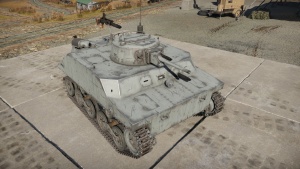
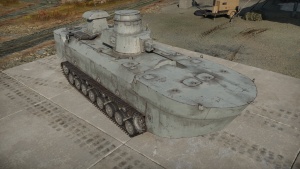
With the vast number of islands scattered across the Pacific, the Japanese Navy needed increased firepower for amphibious landings. Despite possessing several armoured vehicles such as the Type 87 Vickers-Crossley Armoured Car, Type 89 I-Go's, and Type 95 Ha-Go's, these were not easily deployable for naval landings, which required superior firepower for successful operations. After a lengthy development process, the Imperial Navy adapted the Army's Type 95 Ha-Go into an amphibious tank, resulting in the Type 2 Ka-Mi in 1942. However, they missed the initial offensive phase of the Pacific War when they would have been most required. Although roughly 180 were built, most were used in defensive roles, with few amphibious landings occurring due to their late introduction.
With the success of the Type 2 Ka-Mi tank design, the Navy embarked on even larger plans. With the war at sea favoring the Americans, the Navy devised a design for tanks transportable by submarine, capable of evading detection only showing up once surfaced, released from the submarine, and landing on unsuspecting islands, providing considerable firepower with the latest Type 3 Ka-Chi tank and Type 4 Ka-Tsu armour personnel carrier.
The Type 3 Ka-Chi, similar to the Ka-Mi, was a heavily navalized Army design, this time based on the Type 1 Chi-He. It was planned to be supported by the Ka-Tsu, another amphibious tank capable of transporting infantry like a naval APC. However, unlike the Ka-Mi, the Ka-Chi was exclusively reserved for homeland defense due to shifts in development, wartime priorities, and funding. As a result, no offensive naval operations were feasible with these vehicles.

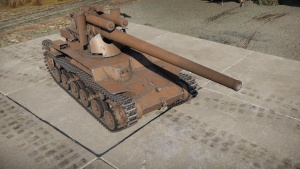
With the Pacific War taking a turn for the worse for the Japanese, the Navy sought to bolster its defences along the coastlines, recognising them as the last line of defence. As the number of ships in the Japanese fleet sank on the frontlines, there was a surplus of naval guns that could be repurposed for coastal defence. Consequently, greater priority was placed on fortifying the coastlines with the remaining supplies and troops.
One notable development was the adaptation of existing tanks to serve in this coastal defense role. The Chi-Ha Short Gun, also known as the 12cm Short Self-Propelled Gun, was inspired by the Army's Type 2 Ho-I tank. Navy engineers armed Chi-Ha Kai tanks with 12cm short guns meant for coastal and merchant ships, transforming them into mobile support tanks to aid Special Naval Landing Forces and other Imperial Japanese Navy personnel in land combat operations.
Another, more obscure development was the Chi-Ha Long Gun, or the 12cm Long Self-Propelled Gun, which was designed to mobilise coastal artillery. Equipped with the 120 mm/45 10th Year Type naval gun, typically found in coastal turrets, gunboats, or serving as secondary armament on cruisers, this vehicle was mounted on a stripped-down Chi-Ha chassis, only maintaining the driver's position and hull extensions added so the gun crew could operate on the rather narrow tank. Its purpose was to hold the coastal lines, delivering devastating firepower, and then retreating to friendly lines at the first sign of danger. This vehicle was not perceived as a traditional tank but rather as a mobile artillery piece designed to bolster coastal defences.
Cold War
National Safety Force
M24 Light Tank, 1952
M16 MGMC, 1952
After Japan's defeat in WWII, American forces occupied the country and disbanded its military. However, with the onset of the Korean conflict in the 1950s and the majority of American troops redeployed to South Korea, Japan found itself vulnerable. To address this, the National Police Reserve (NPR) was established in the 1950s with the primary aim of self-defense. Despite being legally designated as a police force, it was structured and trained similarly to the United States Army.
By 1952, the NPR had undergone significant expansion and was rebranded as the National Safety Force (NSF), evolving into an entity resembling a small army. Trained by American officers, NSF personnel were equipped with American military gear, including firearms and uniforms. However, due to treaty limitations, Japan was unable to develop its own military equipment and relied on the US for heavy machinery. This included standard and anti-air half-tracks, and even "special vehicles" such as the M24 Chaffee.
Following the formal establishment of the Japanese Ground Self-Defense Force (JGSDF) in 1954, the equipment provided to the National Safety Force (NSF) transitioned into the newly established military. While these assets, including the M24 Chaffee tanks and anti-air half-tracks, saw continued use, their relevance diminished over time. Eventually, with the introduction of the Type 74 MBT, and due to their general obsolescence, the earliest hand-me-downs were retired from service.
Japanese (Ground) Self-Defense Force
- Post-War Generation
M4A3(76) Medium Tank, 1954
M41 Light Tank, 1961
M19 MGMC, 1954
- 1st Generation
Type 61 Medium Tank, 1961
Type 60 SPRG, 1960
Type 60 ATM, 1964
- 2nd Generation
Type 74 MBT, 1974
Type 87 RCV, 1987
Type 87 SPAA, 1987
- 3rd Generation
Type 90 MBT, 1990
Type 89 IFV, 1989
Modern Day
- 3.5 Generation
Type 10 MBT, 2010
Type 16 MCV, 2016
Type 93 SAM, 1993


